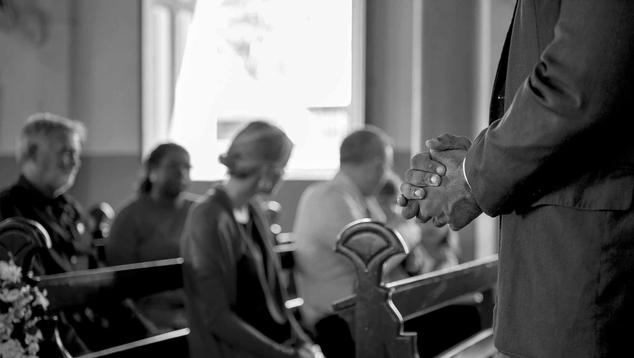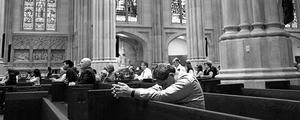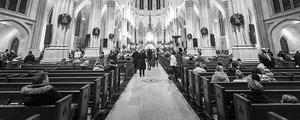Story Highlights
- Half of Americans are church members, down from 70% in 1999
- Most of the decline attributable to increase in percentage with no religion
- Membership has fallen nine points among those who are religious
Learn more about U.S. church membership with Gallup's 2021 update.
WASHINGTON, D.C. -- As Christian and Jewish Americans prepare to celebrate Easter and Passover, respectively, Gallup finds the percentage of Americans who report belonging to a church, synagogue or mosque at an all-time low, averaging 50% in 2018.
U.S. church membership was 70% or higher from 1937 through 1976, falling modestly to an average of 68% in the 1970s through the 1990s. The past 20 years have seen an acceleration in the drop-off, with a 20-percentage-point decline since 1999 and more than half of that change occurring since the start of the current decade.
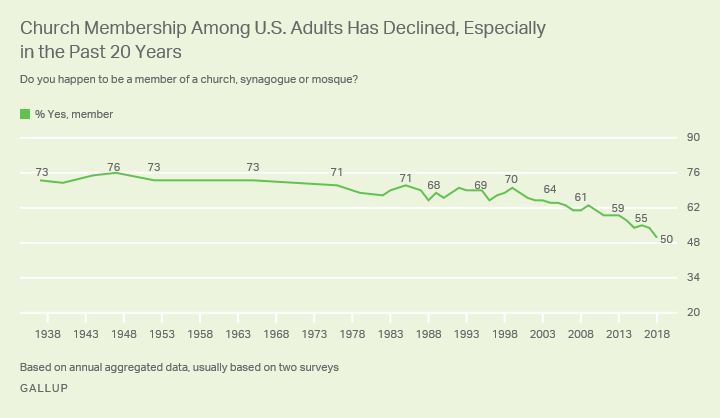
The decline in church membership is consistent with larger societal trends in declining church attendance and an increasing proportion of Americans with no religious preference.
This article compares church membership data for the 1998-2000 and 2016-2018 periods, using combined data from multiple years to facilitate subgroup analysis. On average, 69% of U.S. adults were members of a church in 1998-2000, compared with 52% in 2016-2018.
The decline in church membership mostly reflects the fact that fewer Americans than in the past now have any religious affiliation. However, even those who do identify with a particular religion are less likely to belong to a church or other place of worship than in the past.
Trend Toward No Religious Preference Key Factor in Declining Membership
Since the turn of the century, the percentage of U.S. adults with no religious affiliation has more than doubled, from 8% to 19%.

Although some of those who do not identify with a religion nevertheless indicate that they belong to a church, the vast majority of nonreligious Americans do not. In 1998 through 2000, one in 10 Americans with no religious preference said they belonged to a church, as did an average of 7% in the past three years.
As such, there is an almost one-to-one correspondence between not being religious and not belonging to a church. Consequently, the 11-point increase in no religious affiliation accounts for the majority of the 17-point decline in church membership over the past two decades.
Fewer Religious Americans Are Church Members
Although there has been a steep increase in the proportion of Americans who do not have a religious attachment, they remain a small minority of the U.S. population. Three-quarters of Americans, 77%, identify with some organized religion, though that is down from 90% in 1998 through 2000.
The still-sizable proportion of religious Americans also contribute to declining church membership, as fewer in this group belong to a church than did so two decades ago. At the turn of the century, 73% of U.S. adults with a religious preference belonged to a church, compared with 64% today.
| 1998-2000 | 2016-2018 | Change | |||||||||||||||||||||||||||||||||||||||||||||||||||||||||||||||||||||||||||||||||||||||||||||||||
|---|---|---|---|---|---|---|---|---|---|---|---|---|---|---|---|---|---|---|---|---|---|---|---|---|---|---|---|---|---|---|---|---|---|---|---|---|---|---|---|---|---|---|---|---|---|---|---|---|---|---|---|---|---|---|---|---|---|---|---|---|---|---|---|---|---|---|---|---|---|---|---|---|---|---|---|---|---|---|---|---|---|---|---|---|---|---|---|---|---|---|---|---|---|---|---|---|---|---|---|
| % | % | pct. pts. | |||||||||||||||||||||||||||||||||||||||||||||||||||||||||||||||||||||||||||||||||||||||||||||||||
| Have a religious preference | 73 | 64 | -9 | ||||||||||||||||||||||||||||||||||||||||||||||||||||||||||||||||||||||||||||||||||||||||||||||||
| Do not have a religious preference | 10 | 7 | -3 | ||||||||||||||||||||||||||||||||||||||||||||||||||||||||||||||||||||||||||||||||||||||||||||||||
| Data for the small proportion of respondents who did not answer the religious preference question are not shown (approximately four in 10 of these respondents indicated they were members of a church in each time period). | |||||||||||||||||||||||||||||||||||||||||||||||||||||||||||||||||||||||||||||||||||||||||||||||||||
| Gallup | |||||||||||||||||||||||||||||||||||||||||||||||||||||||||||||||||||||||||||||||||||||||||||||||||||
It is clear then, that the nature of Americans' orientation to religion is changing, with fewer religious Americans finding membership in a church or other faith institution to be a necessary part of their religious experience.
Generational Change Helping Push the Decline in Church Membership
Religiosity is strongly related to age, with older Americans far more likely than younger adults to be members of churches. However, church membership has dropped among all generational groups over the past two decades, with declines of roughly 10 percentage points among traditionalists, baby boomers and Generation X.
Most millennials were too young to be polled in 1998-2000. Now that they have reached adulthood, their church membership rates are exceedingly low and appear to be a major factor in the drop in overall U.S. church membership. Just 42% of millennials are members of churches, on average.
| 1998-2000 | 2016-2018 | Change | |||||||||||||||||||||||||||||||||||||||||||||||||||||||||||||||||||||||||||||||||||||||||||||||||
|---|---|---|---|---|---|---|---|---|---|---|---|---|---|---|---|---|---|---|---|---|---|---|---|---|---|---|---|---|---|---|---|---|---|---|---|---|---|---|---|---|---|---|---|---|---|---|---|---|---|---|---|---|---|---|---|---|---|---|---|---|---|---|---|---|---|---|---|---|---|---|---|---|---|---|---|---|---|---|---|---|---|---|---|---|---|---|---|---|---|---|---|---|---|---|---|---|---|---|---|
| % | % | pct. pts. | |||||||||||||||||||||||||||||||||||||||||||||||||||||||||||||||||||||||||||||||||||||||||||||||||
| Traditionalists (born in 1945 or before) | 77 | 68 | -9 | ||||||||||||||||||||||||||||||||||||||||||||||||||||||||||||||||||||||||||||||||||||||||||||||||
| Baby boomers (born 1946-1964) | 67 | 57 | -10 | ||||||||||||||||||||||||||||||||||||||||||||||||||||||||||||||||||||||||||||||||||||||||||||||||
| Generation X (born 1965-1979) | 62 | 54 | -8 | ||||||||||||||||||||||||||||||||||||||||||||||||||||||||||||||||||||||||||||||||||||||||||||||||
| Millennials (born 1980-2000) | n/a | 42 | n/a | ||||||||||||||||||||||||||||||||||||||||||||||||||||||||||||||||||||||||||||||||||||||||||||||||
| Note: Given that Gallup's polls are based on the 18+ U.S. adult population, the 1998-2000 time period would have included only a small proportion of the millennial generation. | |||||||||||||||||||||||||||||||||||||||||||||||||||||||||||||||||||||||||||||||||||||||||||||||||||
| Gallup | |||||||||||||||||||||||||||||||||||||||||||||||||||||||||||||||||||||||||||||||||||||||||||||||||||
By comparison, 20 years ago, 62% of members of Generation X belonged to a church, when they were about the same age as millennials are today.
The low rates of church membership among millennials conform with the generation's weaker attachment to religion in general. On average, 68% of millennials identify with a religion in the 2016-2018 church membership surveys, while 29% do not. In all other generations, at least 79% have a religious affiliation, with correspondingly lower percentages expressing no faith preference.
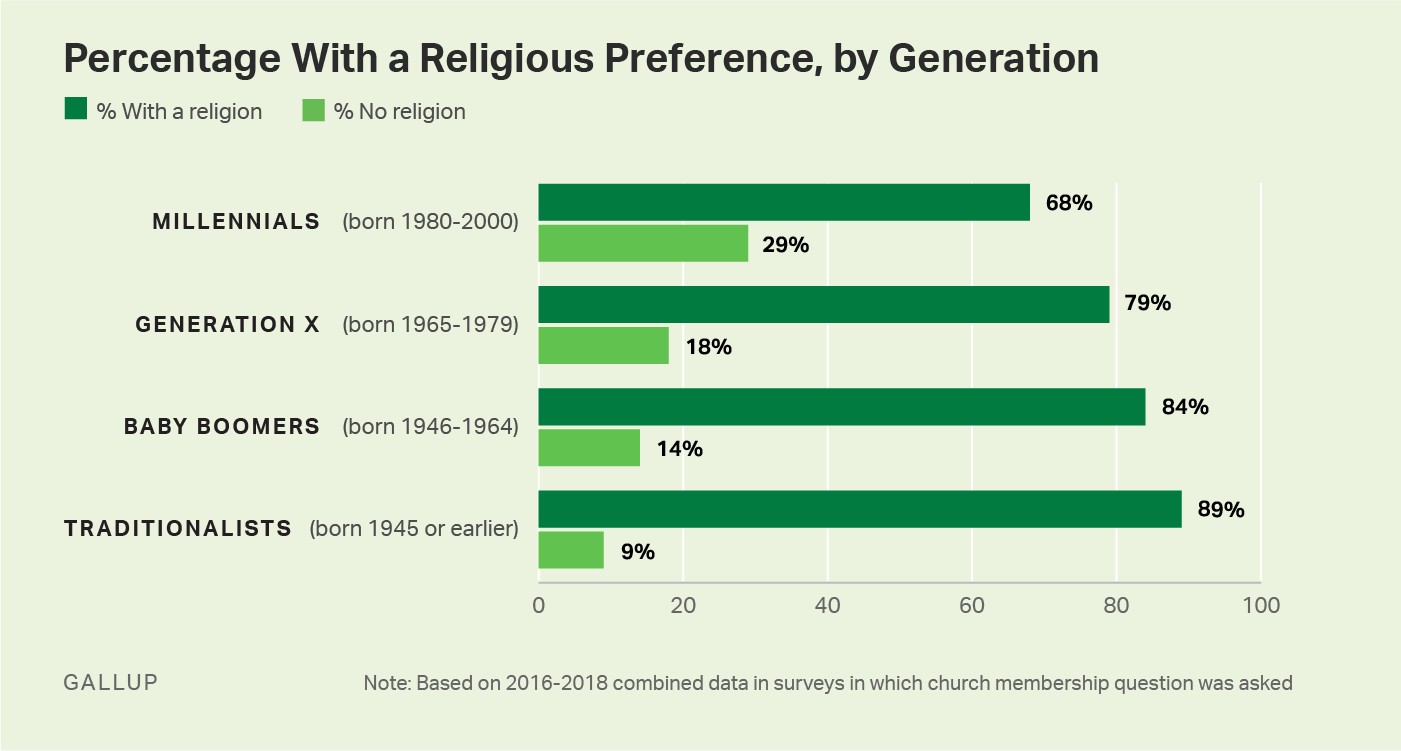
The percentage of millennials with no religion may be continuing to grow, as an average of 33% in Gallup surveys conducted in 2019 to date say they have no religious affiliation.
Not only are millennials less likely than older Americans to identify with a religion, but millennials who are religious are significantly less likely to belong to a church. Fifty-seven percent of religious millennials belong to a church, compared with 65% or more in older generations.
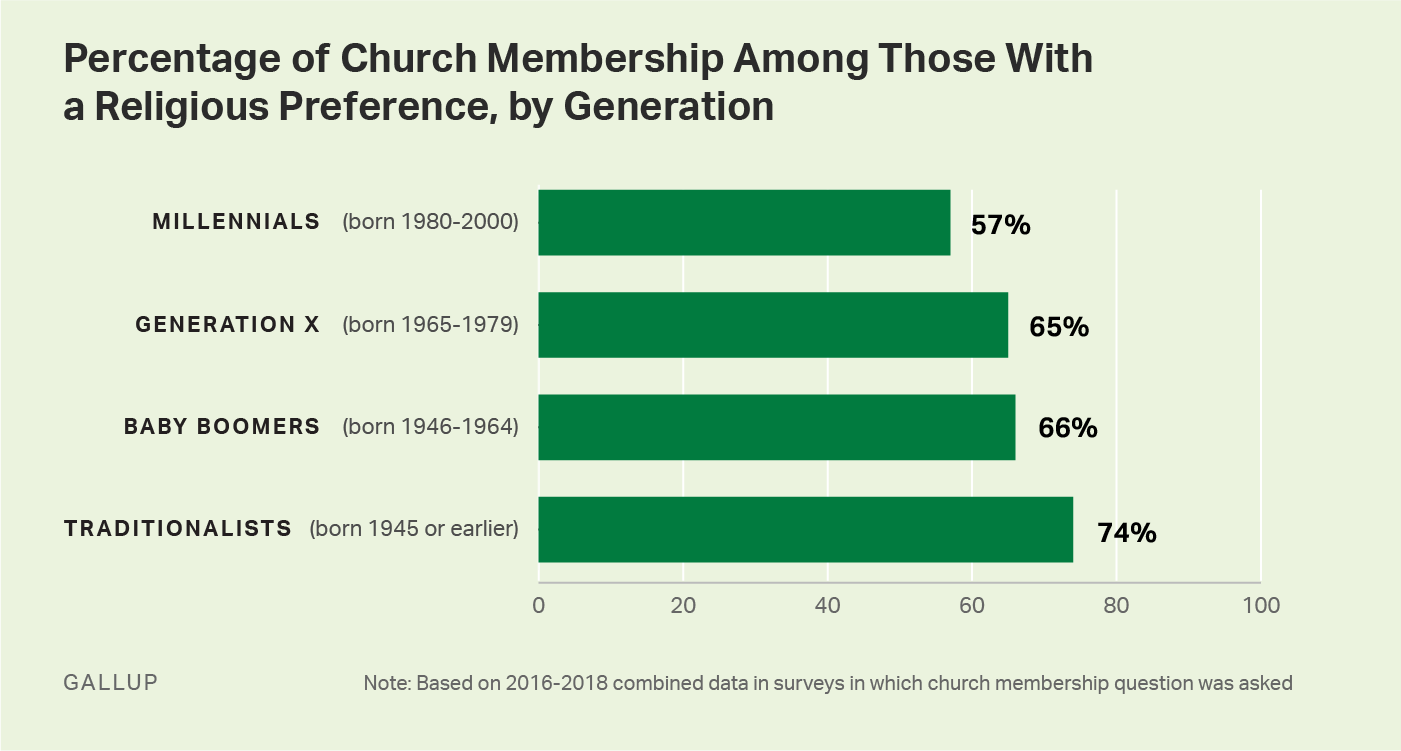
The lower rate of church membership among religious millennials appears to be more a product of generational differences than of life-stage effects. In 1998-2000, 68% of Generation X respondents were church members when they were roughly the same age as today's millennials.
Given that church membership, and religiosity in general, is greater among older adults, the emergence of an increasingly secular generation to replace far more religious older generations suggests the decline in U.S. church membership overall will continue.
Membership Decline Steeper Among Catholics
Gallup has previously reported that church attendance has dropped more among Catholics than among Protestants. Consistent with this, the decline in church membership has been greater among Catholics. Twenty years ago, 76% of Catholics belonged to a church; now, 63% do.
Meanwhile, 67% of Protestants, down from 73% in 1998-2000, are members of a church. Much of the decline in Protestant membership is attributable to the increasing percentage of Americans who simply identify their religion as "Christian" rather than as a specific Protestant denomination such as Baptist, Lutheran or Methodist. Gallup classifies "Christian" respondents as Protestants but, as might be expected, nondenominational Christians are less likely to belong to a church (57%) than Americans who identify with a specific Protestant denomination (70%).
There are insufficient cases to provide reliable estimates on church membership among other religions, but the data suggest that membership in a place of worship has been stable among Mormons (near 90% in both time periods) and Jews (in the mid- to low 50% range in both time periods) over the past two decades.
In contrast to the variable changes in church membership among generational and faith subgroups, the declines have been fairly similar among most other demographic subgroups. However, the rates have differed by party identification, as Republicans show a relatively modest decline in church membership of eight points since 1998-2000 (from 77% to 69%). In contrast, Democrats show one of the largest subgroup declines, of 23 points, from 71% to 48%.
Full data for subgroups are shown in a table at the bottom of the article.
Implications
Although the United States is one of the more religious countries, particularly among Western nations, it is far less religious than it used to be. Barely three-quarters of Americans now identify with a religion and only about half claim membership in a church, synagogue or mosque.
The rate of U.S. church membership has declined sharply in the past two decades after being relatively stable in the six decades before that. A sharp increase in the proportion of the population with no religious affiliation, a decline in church membership among those who do have a religious preference, and low levels of church membership among millennials are all contributing to the accelerating trend.
The challenge is clear for churches, which depend on loyal and active members to keep them open and thriving. How do they find ways to convince some of the unaffiliated religious adults in society to make a commitment to a particular house of worship of their chosen faith? Roughly one in four U.S. adults are religious but not members of a church, synagogue or mosque.
Church leaders must also grapple with the generational slide away from religion. Millennials are much less likely than their elders to indicate a religious preference, and presumably the nearly one-third of millennials without a religious preference are unlikely to ever join a church. But the roughly two-thirds of millennials who do express a religious preference may one day be convinced to join, perhaps as more get established in their lives, including having families, which can be an impetus to becoming a part of a faith community.
Another obstacle churches face is Americans' eroding confidence in the institution of organized religion. While organized religion is not the only U.S. institution suffering a loss of confidence, Americans have lost more confidence in it than in most other institutions.
In addition to the ongoing trends toward declining religiosity, Americans who are religious may also be changing their relationship to churches. They may not see a need to, or have a desire to, belong to a church and participate in a community of people with similar religious beliefs.
These trends are not just numbers, but play out in the reality that thousands of U.S. churches are closing each year. Religious Americans in the future will likely be faced with fewer options for places of worship, and likely less convenient ones, which could accelerate the decline in membership even more.
Learn more about how the Gallup Poll Social Series works.
| 1998-2000 | 2016-2018 | Change | ||||||||||||||||||||||||||||||||||||||||||||||||||||||||||||||||||||||||||||||||||||||||||||||||||
|---|---|---|---|---|---|---|---|---|---|---|---|---|---|---|---|---|---|---|---|---|---|---|---|---|---|---|---|---|---|---|---|---|---|---|---|---|---|---|---|---|---|---|---|---|---|---|---|---|---|---|---|---|---|---|---|---|---|---|---|---|---|---|---|---|---|---|---|---|---|---|---|---|---|---|---|---|---|---|---|---|---|---|---|---|---|---|---|---|---|---|---|---|---|---|---|---|---|---|---|---|
| % | % | pct. pts. | ||||||||||||||||||||||||||||||||||||||||||||||||||||||||||||||||||||||||||||||||||||||||||||||||||
| U.S. adults | 69 | 52 | -17 | |||||||||||||||||||||||||||||||||||||||||||||||||||||||||||||||||||||||||||||||||||||||||||||||||
| Religion | ||||||||||||||||||||||||||||||||||||||||||||||||||||||||||||||||||||||||||||||||||||||||||||||||||||
| Catholic | 76 | 63 | -13 | |||||||||||||||||||||||||||||||||||||||||||||||||||||||||||||||||||||||||||||||||||||||||||||||||
| Protestant ^ | 73 | 67 | -6 | |||||||||||||||||||||||||||||||||||||||||||||||||||||||||||||||||||||||||||||||||||||||||||||||||
| Gender | ||||||||||||||||||||||||||||||||||||||||||||||||||||||||||||||||||||||||||||||||||||||||||||||||||||
| Men | 64 | 47 | -17 | |||||||||||||||||||||||||||||||||||||||||||||||||||||||||||||||||||||||||||||||||||||||||||||||||
| Women | 73 | 58 | -15 | |||||||||||||||||||||||||||||||||||||||||||||||||||||||||||||||||||||||||||||||||||||||||||||||||
| Age | ||||||||||||||||||||||||||||||||||||||||||||||||||||||||||||||||||||||||||||||||||||||||||||||||||||
| 18-29 years old | 63 | 41 | -22 | |||||||||||||||||||||||||||||||||||||||||||||||||||||||||||||||||||||||||||||||||||||||||||||||||
| 30-49 years old | 65 | 49 | -16 | |||||||||||||||||||||||||||||||||||||||||||||||||||||||||||||||||||||||||||||||||||||||||||||||||
| 50-64 years old | 71 | 56 | -15 | |||||||||||||||||||||||||||||||||||||||||||||||||||||||||||||||||||||||||||||||||||||||||||||||||
| 65+ years old | 79 | 64 | -15 | |||||||||||||||||||||||||||||||||||||||||||||||||||||||||||||||||||||||||||||||||||||||||||||||||
| Race/Ethnicity | ||||||||||||||||||||||||||||||||||||||||||||||||||||||||||||||||||||||||||||||||||||||||||||||||||||
| Non-Hispanic white | 68 | 53 | -15 | |||||||||||||||||||||||||||||||||||||||||||||||||||||||||||||||||||||||||||||||||||||||||||||||||
| Non-Hispanic black | 78 | 65 | -13 | |||||||||||||||||||||||||||||||||||||||||||||||||||||||||||||||||||||||||||||||||||||||||||||||||
| Hispanic | 68 | 45 | -23 | |||||||||||||||||||||||||||||||||||||||||||||||||||||||||||||||||||||||||||||||||||||||||||||||||
| Region | ||||||||||||||||||||||||||||||||||||||||||||||||||||||||||||||||||||||||||||||||||||||||||||||||||||
| East | 69 | 50 | -19 | |||||||||||||||||||||||||||||||||||||||||||||||||||||||||||||||||||||||||||||||||||||||||||||||||
| Midwest | 72 | 56 | -16 | |||||||||||||||||||||||||||||||||||||||||||||||||||||||||||||||||||||||||||||||||||||||||||||||||
| South | 74 | 58 | -16 | |||||||||||||||||||||||||||||||||||||||||||||||||||||||||||||||||||||||||||||||||||||||||||||||||
| West | 57 | 43 | -14 | |||||||||||||||||||||||||||||||||||||||||||||||||||||||||||||||||||||||||||||||||||||||||||||||||
| Education | ||||||||||||||||||||||||||||||||||||||||||||||||||||||||||||||||||||||||||||||||||||||||||||||||||||
| College graduate | 68 | 55 | -13 | |||||||||||||||||||||||||||||||||||||||||||||||||||||||||||||||||||||||||||||||||||||||||||||||||
| College nongraduate | 69 | 51 | -18 | |||||||||||||||||||||||||||||||||||||||||||||||||||||||||||||||||||||||||||||||||||||||||||||||||
| Party ID | ||||||||||||||||||||||||||||||||||||||||||||||||||||||||||||||||||||||||||||||||||||||||||||||||||||
| Republican | 77 | 69 | -8 | |||||||||||||||||||||||||||||||||||||||||||||||||||||||||||||||||||||||||||||||||||||||||||||||||
| Independent | 59 | 45 | -14 | |||||||||||||||||||||||||||||||||||||||||||||||||||||||||||||||||||||||||||||||||||||||||||||||||
| Democrat | 71 | 48 | -23 | |||||||||||||||||||||||||||||||||||||||||||||||||||||||||||||||||||||||||||||||||||||||||||||||||
| Ideology | ||||||||||||||||||||||||||||||||||||||||||||||||||||||||||||||||||||||||||||||||||||||||||||||||||||
| Conservative | 78 | 67 | -11 | |||||||||||||||||||||||||||||||||||||||||||||||||||||||||||||||||||||||||||||||||||||||||||||||||
| Moderate | 66 | 48 | -18 | |||||||||||||||||||||||||||||||||||||||||||||||||||||||||||||||||||||||||||||||||||||||||||||||||
| Liberal | 56 | 37 | -19 | |||||||||||||||||||||||||||||||||||||||||||||||||||||||||||||||||||||||||||||||||||||||||||||||||
| Marital status | ||||||||||||||||||||||||||||||||||||||||||||||||||||||||||||||||||||||||||||||||||||||||||||||||||||
| Married | 71 | 59 | -12 | |||||||||||||||||||||||||||||||||||||||||||||||||||||||||||||||||||||||||||||||||||||||||||||||||
| Not married | 64 | 45 | -19 | |||||||||||||||||||||||||||||||||||||||||||||||||||||||||||||||||||||||||||||||||||||||||||||||||
| ^ Protestants include those who identify their religion as "Christian." | ||||||||||||||||||||||||||||||||||||||||||||||||||||||||||||||||||||||||||||||||||||||||||||||||||||
| Gallup | ||||||||||||||||||||||||||||||||||||||||||||||||||||||||||||||||||||||||||||||||||||||||||||||||||||
